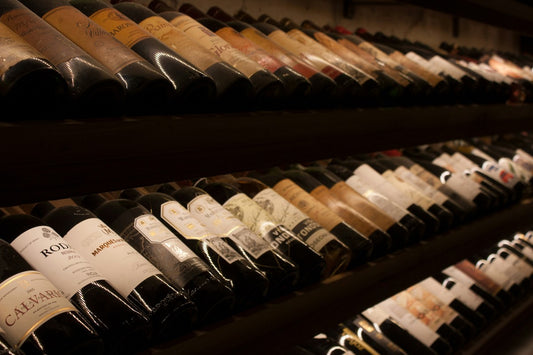How To Keep Chocolate From Melting – Easy Ways Chefs Use!
Norah Clark
To keep chocolate from melting you are best storing chocolate in a refrigerator, in a cooler bag, insulated container, or in a box with ice packs.
Another option is to use specially formulated, melt-resistant chocolate if you are traveling to a hot region where proper storage may not be available. This type of chocolate has a higher melting point and is less likely to be affected by heat.
There are not many things that are more frustrating and uncomfortable than melting chocolate. While the process of storage is simple, however, it’s not always feasible to store it in a “cool, dry place.”
Read on to see the best way to store chocolate and chocolate-based products and the best ways to deal with situations when you’re unable to stop chocolate from melting!
How To Keep Chocolate From Melting
There is always a perfect method to store chocolate bars as well as other chocolate items.
If you are storing chocolate bars made from pure cocoa you can store them in a dark, cool space. A cool zone is typically regarded to be anything in the range of 50-66.2oF (10-19oC).
Anything more than that and you’re at the temperature of the room and this causes chocolate to become softer. Anything lower, and the chocolate could alter its crystal structure and result in an increase in sugar in the chocolate.
Therefore, the best areas are an area for food storage or a pantry Do not keep chocolate in the freezer or fridge. It is possible, but it’s not the best option.
Also, ensure that the storage area doesn’t get moist. This means you shouldn’t put the chocolate in the sink, where there is a lot of moisture.
This can lead to bacteria growth, and chocolate going bad. It can also cause an increase in fat (when the fat streaks develop on chocolate that has begun melting).
If you’re keeping products with chocolate in them always look up the recipe’s storage guidelines.
Typically, baked items are kept at temperatures that are at room temperature. Desserts that require to be stored in the refrigerator generally require a place in the fridge to be stored.
Best Ways To Keep Chocolate From Melting
Unfortunately, there are occasions when you are unable to store chocolate or chocolate-related products in the best conditions.
It could happen during moving when you’re transporting the ingredients to another location, or while you’re having a picnic or camping.
We have put together an array of fantastic alternatives to prevent that chocolate’s melting.
Remember that certain methods may be more appropriate for specific items.
It’s for instance, perfectly appropriate to store the chocolate bars in the fridge. They’ll develop sugar blooms, but their taste will not change.
The mere act of placing an unopened choco cake in the refrigerator will cause it to turn dry and stale.
Check out our complete list of ingredients that can aid you in deciding the best method for your chocolate!
1. Store It In The Fridge
We’re aware that we have just discussed a drawback of this approach, yet it’s the best method to keep the chocolate from melting under any circumstance.
When you store chocolate in the refrigerator the sugar crystals within the chocolate will react with water in the fridge. They then move to the surface and create an opaque transparent coating (sugar blossom) over the chocolate.
Although this might not be appealing to the eye, neither the texture nor taste of the chocolate alters immediately. It is only after a few days or weeks of keeping it in the refrigerator can create more drastic changes in the quality of the chocolate.
Therefore, you’ll be able to enjoy the chocolate, put it in baking recipes, and melt it to use for different reasons.
As we’ve already mentioned, most baked items with chocolate inside are fine to keep at room temperature.
It’s only at extremely high temperatures (above the 77oF mark or 25oC) baking items will turn unpleasantly soft to consume (or simply more difficult to eat).
Also, all fridge recipes must be kept in the refrigerator and without exclusion! If not, they’ll melt and explode.
2. Use Melt-Proof Chocolate
This is a measure to prevent taking if you are planning to go somewhere you can’t store chocolate items in a cool temperature.
The use of melt-proof chocolate or chocolate-flavored candy melts allows you to carry more items.
Let’s say you’ve made chocolate cookies for a wedding reception during the summer heat. Fake chocolate with greater melting temperature allows for retaining an improved shape and structure for a period of time.
It’s also a fantastic alternative to chocolate during camping trips to make S’mores or for an intimate picnic using strawberries that have been chocolate-coated.
3. Seal With Cooler Packs
This is a trick we often use. If you own a cooler bag that is insulated it is possible to keep your candy by using ice packs. Ice packs can aid in keeping the bag cool, and will prevent your chocolate from melting.
This method is best for small items or chocolate bars. Also, you can utilize cooler boxes, but they’re not the best option to take on a hike.
Transporting a 3-tier decorated with chocolate is an illustration of something that will not be a good idea for this technique.
4. Store In The Freezer
If you’re facing an issue with space in your fridge at home or when you get to your destination, but there’s not any fridge then the freezer will be your new greatest friend. However, only if the overall temperature of the room is high!
This is a fantastic short-term storage option for chocolate items that could melt. Keep them in the freezer for 45 minutes at most.
However, with chocolate bars, you can keep them for longer. Chocolate bars can be stored in the freezer for an indefinite time!
Be aware that after you’ve frozen the chocolate bars, they’re best consumed as-is or in recipes. They are not suitable for tempering.
5. Blast The AC
Another trick we’ve tried several times. Bakers, caterers, and chefs have used this method for years! It really is a lifesaver!
There was a time when we attended an event for a birthday featuring a complex chocolate cake. When we got to the location and walked in, we immediately realized that the temperature was far way too high for the chocolate sculpture to withstand.
We found an empty room that was set to 60.8oF (16oC) and then left the room without any problems.
This strategy is also effective in the event that you must transport chocolate products in a vehicle on a hot day. This technique is obviously effective on larger items as well as small ones.
What Temperature Does Chocolate Start To Melt?
Chocolate is a remarkably delicate ingredient.
If you know how chocolate is made you’ll understand that it’s in the end an Emulsion that is bound through very specific bonds, and, often, chemical stabilizers meaning that the bonds can also break.
When it comes to saturated water molecules it’s simple to make it happen. In the event that this occurs the structure of the chocolate is altered completely. One of the most popular examples of melting chocolate!
The fats within the ingredient have been heated up too much. They break apart and are separated from the other cocoa solids. This results in the chocolate being smooth and liquid.
When exactly will the melting process begin? Chocolate’s melting point is that ranges from 86 to 90oF (30-32.2oC).
Anything that is above room temperature (72oF 22oC) and below the melting point will produce soft chocolate. At temperatures above 90oF, your chocolate is likely to alter its crystal structure. This is the main reason that makes the chocolate melt.
Will Chocolate Desserts Melt As Well?
Many believe that simply since chocolate begins to melt and soften above 72oF (22oC) and desserts that contain it will do the same.
When it comes to the time of the day, it all depends on the dessert that the chocolate was added to.
For instance, a cake made using chocolate that has been melted or chocolate pieces will not melt when kept at temperatures of room temperature. The chocolate chunks may melt a bit (depending on the temperatures) however, they will not cause the whole cake to break.
But, something similar to the consistency of a choc custard is likely to disappear from its jelly-like semi-solid consistency if stored at room temperature for too long.
Other desserts that are made from chocolate that don’t retain their shape include panna cotta, cheesecake that doesn’t bake, and puddings.
In essence, anything that has to be kept in the refrigerator will not withstand temperatures above ambient temperature.
Anything that is kept at room temperature. (like brownies and cookies, rusks, and even bread) isn’t as affected by temperatures that are slightly higher.
FAQs
What can I wrap chocolate in to stop it melting?
To prevent chocolate from melting, you can wrap it in materials such as aluminum foil, plastic wrap, or parchment paper. These materials will help to insulate the chocolate and prevent it from being exposed to heat.
Where do you store chocolate so it doesn’t melt?
Chocolate should be stored in a cool, dry place away from direct sunlight and heat sources, such as stoves or radiators. A pantry or cupboard is a good option. If the room temperature is high, consider storing the chocolate in the refrigerator in airtight containers or zip-lock bags.
How do you keep chocolate hard at room temperature?
One way to keep chocolate hard at room temperature is to temper it properly before using it in a recipe. Another option is to add ingredients such as cocoa butter or paraffin wax, which will help to stabilize the chocolate and prevent it from melting.
Summary
The best way to keep chocolate from melting is storing it in a cool, dark area between 50-66.2°F (10-19°C), but storing chocolate in the freezer or fridge is not ideal.
Moisture is another factor to consider, as it can cause bacteria growth, alter the chocolate’s crystal structure, and increase fat streaks.
We have featured alternative ways to keep chocolate from melting, including storing it in the fridge, using melt-proof chocolate, sealing it with cooler packs, storing it in the freezer, and blasting the AC.










